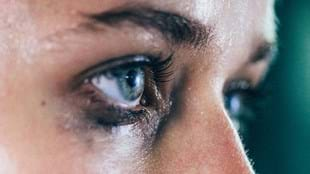Experts on crying distinguish between three main types of tears; basal, reflex and psychic tears. Basal tears are released all the time, to stop your eyes drying out. Reflex tears help you to wash out sudden irritants, like the particles of a freshly chopped onion. Then there are psychic tears, the tears released in response to an emotion – sadness, distress, grief, but also relief, pleasure and laughter. These are more confounding, at least in terms of understanding their functional purpose.
At a biological level, tears are released because the limbic system – the part of the brain that deals with emotions – is connected to the autonomic nervous system, which controls bodily functions but isn’t always within our control. However, the nervous system does have some control over the lacrimal, tear-producing system, through the deployment of neurotransmitters, which order the tear ducts into action.
Do women cry more than men?
Yes, although estimates vary. Ad Vingerhoets, a psychologist from the Netherlands and author of Why Only Humans Weep: Unravelling the Mysteries of Tears has found that on average, women cry twice as often as men, between 30 and 64 times a year, while men cry six to 17 times a year. He has suggested that testosterone may stop men from crying, whereas women’s higher prolactin levels (a hormone that is produced in higher levels during pregnancy) may promote it. Of course social, cultural and even religious norms are likely to be a factor...
What’s the point of crying?
The science on this is inconsistent. Charles Darwin thought crying was purposeless, an evolutionary fluke, “an incidental result, as purposeless as the secretion of tears from a blow outside the eye.” Psychologists and evolutionary biologists now tend to agree that Darwin was wrong, although they don’t yet agree on the evolutionary purpose of crying.
There is some consensus that it’s linked to the human capacity for empathy, and that it’s a way of signaling you’re in need of comfort or help. This is obvious if the crier is a baby or a child, but it’s less clear why crying persists into adulthood. Some say it’s a way to elicit mercy from an antagonistic enemy, but also to elicit sympathy and perhaps the strategic assistance of family, friends and allies.
If the crier receives social support in response to their tears, the solace and comfort might help them feel a bit better. If people cry in front of us, we can at least avoid making them feel worse than they already do.
“It is important to legitimize emotional tears in relationships,” says evolutionary biologist and marriage therapist Oren Hasson. “Too often, women who cry feel ashamed, silly or weak, when in reality they are simply connected with their feelings, and want sympathy and hugs from their partners.”
Which is fine, except more often than not we prefer to cry alone, and apparently more between 6pm and 10pm.
Why do we cry when we’re happy?
Ad Vingerhoets suggests that if something moves us to tears, it serves as a personal reminder that something is important to us. Also, if crying is an expression of helplessness, this could explain why we cry in response to what we think is a positive emotion – we don’t know how to express ourselves, so we cry. Or we’re just helpless with laughter. Why we find things funny is a whole ‘nother thing, of course.
Is crying good for your health?
Many believe that crying is cathartic, even that suppressing tears causes headaches, ulcers, hypertension, insomnia, cancer and even premature death. Much of it seems to be culturally determined. The Toraja in Indonesia think that crying should only be done by a bereaved person. On the other hand, some cultures practice communal crying: people cry together, probably to promote social bonding in times of anxiety (preparing to go to war) and in times of grief (after a disaster).
While there’s little evidence that crying more often leads to better health, there is some evidence that psychic tears have a different chemical make-up than basal and reflex tears, containing more of a hormone called Leu-enkephalin that is a natural painkiller. These may calm down our eyes, which might be why people feel better after a good cry.
But do you really feel better after a good cry?
It depends. Vignerhoets and his team analyzed 5000 accounts of crying experiences and concluded that if there are benefits, it depends on the what, where and when of a particular crying episode. While the majority of survey participants said they felt better after a good sob, a third reported no improvement in mood and a tenth felt worse.
Maybe crying, like beauty, is in the eye of the beholder.







